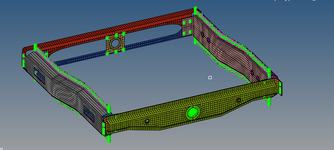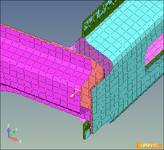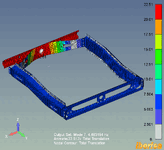shiv22111993
Student
- Nov 7, 2024
- 3
Hi ,
I am performing modal analysis of an assembly in a free-free state. I am getting only 5 rigid body modes instead of 6. I have tried many things, but it didn't work . I am attaching .bdf file. Please help me resolve my problem.
I am performing modal analysis of an assembly in a free-free state. I am getting only 5 rigid body modes instead of 6. I have tried many things, but it didn't work . I am attaching .bdf file. Please help me resolve my problem.





